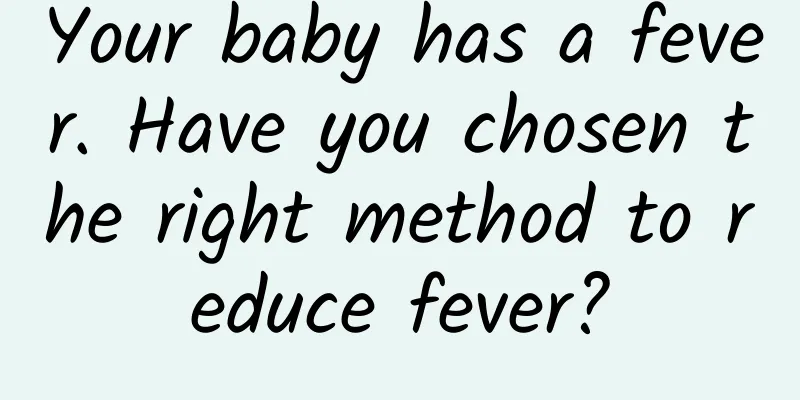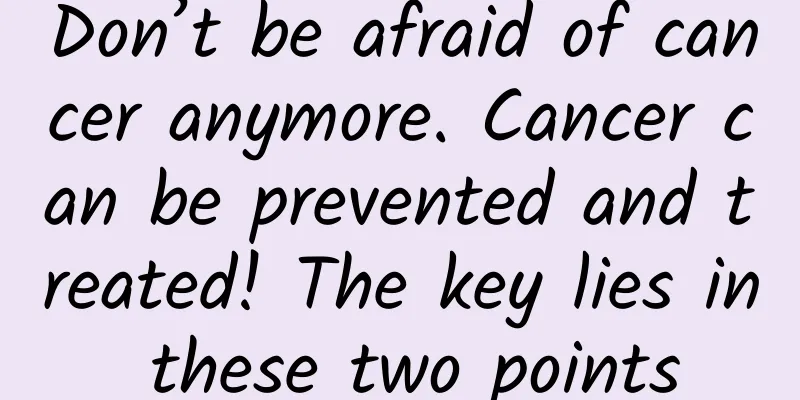Your baby has a fever. Have you chosen the right method to reduce fever?

|
1. Does the baby really have a fever? Definition of fever: In clinical practice, rectal temperature ≥ 38°C or axillary temperature ≥ 37.5°C is usually used. Defined as fever. An abnormality in body temperature should be considered a manifestation of illness. Types of fever: Fever is clinically divided into four categories according to the temperature. Based on the axillary temperature, 37.5-38.0℃ is low fever, 38.1-38.9℃ is moderate fever, 39.0-40.9℃ is high fever, and ≥41.0℃ is very high fever. Methods of measuring body temperature: rectal temperature measurement (the gold standard for measurement), axillary temperature measurement (can be used as a substitute for rectal temperature), infrared temporal artery temperature measurement/infrared tympanic membrane temperature measurement (due to large errors, it is not recommended for younger infants), etc. Pharmacist friendly reminder: If your baby has a fever, please record the time of fever/highest temperature/fever reduction method/name of antipyretic drug/drug dosage, etc. Parents who take their babies to see a doctor must remember the child's medical history and provide it accurately to the doctor as an important reference for diagnosis and treatment. 2. If I confirm that my child has a fever, should I take him to the hospital for treatment, or should I first give him antipyretics and observe at home? For infants under 3 months old, if the child's rectal temperature is not less than 38℃, you should take the child to see a doctor, even if he or she seems normal or has no symptoms of illness. It is not recommended to give antipyretics to infants under 3 months old on your own. Please follow the doctor's instructions after seeing a doctor. Children aged 3-36 months should seek medical attention if their rectal temperature is ≥ 38°C for more than 3 days and if they appear unwell, irritable, clingy, or refuse to drink. Children aged 3-36 months should seek medical attention immediately if their rectal temperature is ≥38.9°C. Children of any age should seek medical attention immediately if they have the following conditions: oral, rectal, ear or forehead temperature ≥40℃; axillary temperature ≥39.4℃; fever causing convulsions; recurrent fever; fever in patients with underlying diseases such as heart disease; fever accompanied by a new rash, etc. Pharmacist's friendly reminder: Fever is a clinical sign of illness. Once the cause of the fever is identified, the main purpose of treating the fever is to improve the child's comfort. 3. Which antipyretic drug should be used? Commonly used antipyretic drugs: Acetaminophen: It can be used for children over 3 months old, 10-15 mg/kg at a time (maximum single dose is 800-1000 mg), orally, once every 4-6 hours (no more than 4 times in 24 hours). The use of acetaminophen can reduce the body temperature of about 80% of children with fever by 1-2°C, and it will take effect in about 30-60 minutes, reach the maximum effect within 3-4 hours, and last for 4-6 hours. This type of drug is highly safe, and side effects are rarely seen when administered at appropriate doses. Ibuprofen: It can be used for children over 6 months old, 10 mg/kg at a time (maximum single dose 600 mg), oral, once every 6 hours, the maximum daily dose is 40 mg/kg, and no more than 2.4 g per day. Ibuprofen takes effect within 60 minutes, reaches the peak effect in 3-4 hours, that is, the temperature drops by 1-2°C, and the duration of action is 6-8 hours. Ibuprofen is generally safe, but it should be noted that ibuprofen is generally not recommended for infants under 6 months of age. Compared with older children, infants under 6 months of age have relatively limited renal function and may have an increased risk of renal toxicity. Pharmacist's friendly reminder: 1. Children who are taking antipyretic drugs should no longer use cough and cold compound preparations. These preparations often contain antipyretic drugs. Giving compound preparations and antipyretic drugs at the same time may lead to drug overdose and cause unnecessary drug harm. 2. It is not recommended to use other drugs such as analgin, acetylsalicylic acid, phenylbutazone, hydroxyphenylbutazone, indomethacin, aspirin, lysine, nimesulide, aminopyrine as antipyretic drugs for children. It is opposed to using glucocorticoids as antipyretic agents for children to reduce fever. Parents should not rush to reduce fever and add such drugs without authorization. 4. Let’s briefly talk about the methods of “physical fever reduction”! It is recommended to use antipyretics and physical cooling at the same time in the following situations: The cause of the elevated temperature is unclear (heatstroke or fever); fever combined with heatstroke (such as excessive wrapping, medication, etc.); underlying neurological disease, in which case the child may have abnormal temperature control and poor response to antipyretics. Method: It is recommended to wipe with comfortable warm water or lukewarm water, the water temperature is generally around 30℃; wiping is more effective than soaking; although cold water may lower the body temperature faster, it will also bring more discomfort and is not recommended; alcohol should not be used for wiping, as it can be absorbed through the skin and cause poisoning. 5. Can 2 or more antipyretic drugs be taken alternately? Both acetaminophen and ibuprofen inhibit the hypothalamic temperature regulation center to reduce fever. Although the combination of acetaminophen and ibuprofen can reduce body temperature slightly more than acetaminophen or ibuprofen alone, it has no significant clinical significance and cannot improve the comfort level of children. The combination of the two drugs increases the risk of adverse drug reactions. Therefore, the guidelines for the use of antipyretics for children in various countries do not recommend the combination or alternation of the two drugs for antipyretic treatment. The combined use of single-ingredient antipyretic and analgesic drugs and compound cold medicines containing the same drug ingredients poses the risk of duplication and even drug overdose, so these two types of drugs should be avoided in combination. |
<<: Cough and phlegm love and hate each other
>>: How to prevent and treat iron deficiency in children
Recommend
Second child confinement
Giving birth to a child will disrupt a woman'...
How can women reduce belly fat?
For women, if they have a big belly, it will not ...
What causes vaginal bleeding after sex?
Generally speaking, normal and coordinated sexual...
Genital herpes pictures and symptoms
Many people in today's society know very litt...
Parse.ly: Facebook's new algorithm caused a 28% drop in publisher referral traffic
In January 2018, Facebook announced changes to it...
When is the best time to take maternity photos?
Photographs are a remarkable invention and, to so...
Is it painful to have a curettage after childbirth?
Everyone knows that natural childbirth is good fo...
Getting pregnant while taking emergency contraceptive pills
For couples who do not plan to have children for ...
Which part of the tea leaves should be picked? When should the tea leaves be picked?
The tea leaves we often drink are picked from spe...
What is the difference between head position and breech position?
In the late stage of pregnancy, women should prep...
What are cervical warts?
For female friends, it is important to prevent th...
How many days of pregnancy does frequent urination begin?
Pregnancy will cause different levels of pressure...
What kind of soup do women often drink to maintain their beauty
In addition to being very concerned about their f...
Success rate of fallopian tube anastomosis
Some women do not want to have any more children ...
What is the cause of increased leucorrhea before delivery?
Whether during pregnancy or approaching delivery,...









